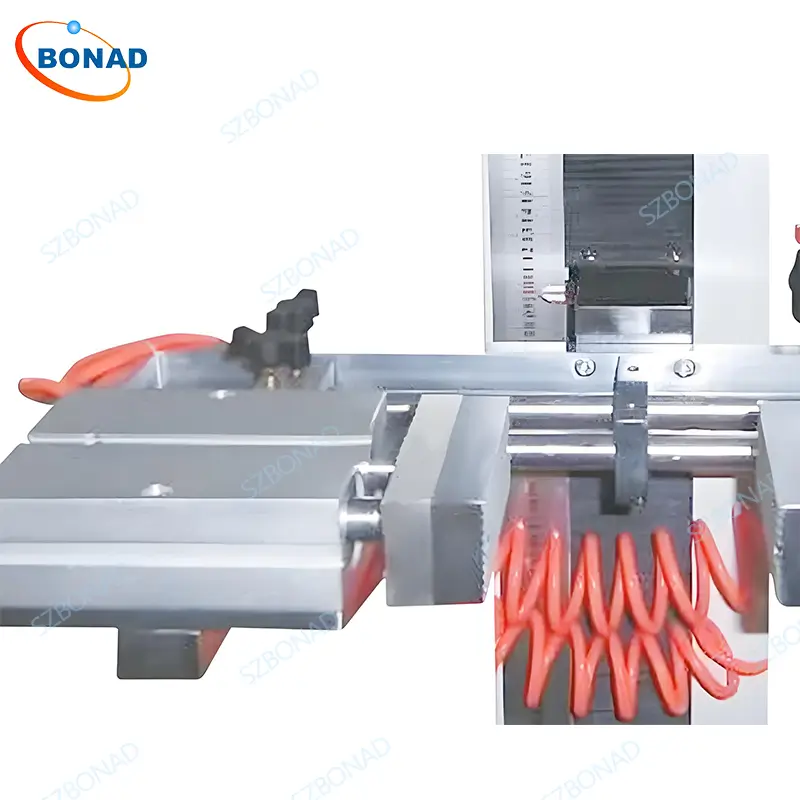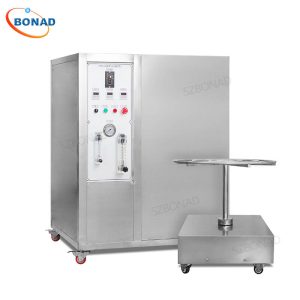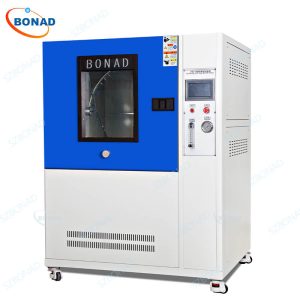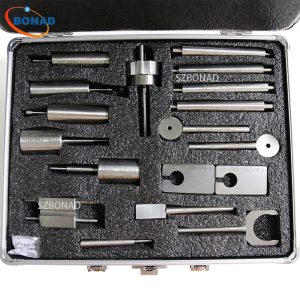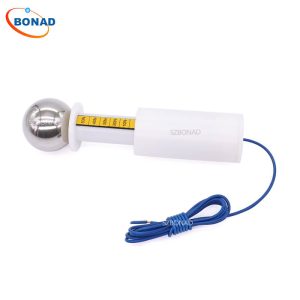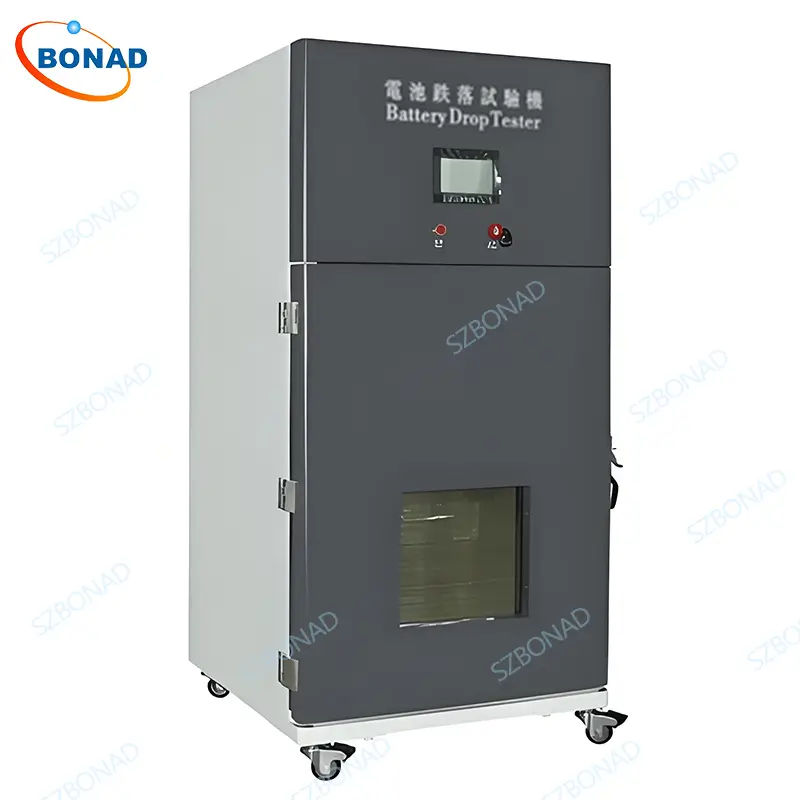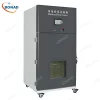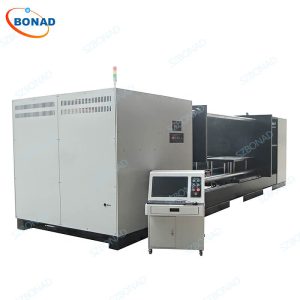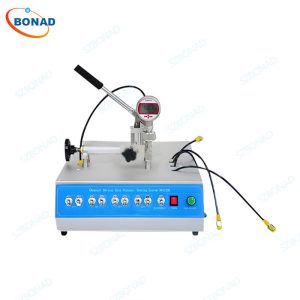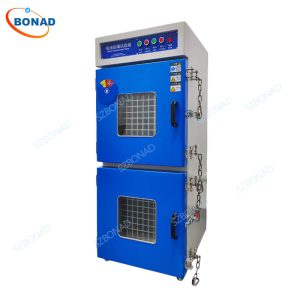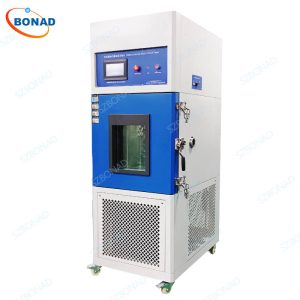IEC 62133 Battery Drop Tester – BONAD Steel Plate Battery Drop Test Machine
Standards:
This tester complies with the following international standards:
- IEC 62133-1:2017 (Clause 7.3.3): Free fall test for batteries.
- IEC 60086-4 (Clause 6.5.4): Free fall test for primary batteries.
- IEC 60086-1: General requirements for primary batteries.
- UN 38.3 : Lithium battery transport safety standard.
These standards ensure that the equipment provides reliable and repeatable results for battery safety testing.
Application:
The IEC 62133 Battery Drop Tester is widely used in industries where battery safety and product durability are critical. Its applications include:
- Battery Manufacturers: Testing the safety and structural integrity of lithium-ion, nickel-metal hydride, and other types of batteries.
- Consumer Electronics Industry: Evaluating the durability of small electronic devices such as mobile phones, MP3 players, electronic dictionaries, and more.
- Research & Development: Conducting safety tests during the development phase of new battery technologies.
- Quality Control: Ensuring compliance with international safety standards in production environments.
Features:
This tester offers several advanced features that enhance its functionality and accuracy:
- Package Face, Corner, Edge Free Drop Testing: Supports comprehensive testing of different drop orientations for realistic simulation.
- Digital Height Display: Equipped with an encoder-based height measurement system for precise control of drop height within ±2% or ±10mm tolerance.
- PLC Touch Screen Control: User-friendly interface for easy operation and parameter setting.
- Pneumatic Structure: Utilizes pneumatic cylinders for secure specimen fixation and controlled release during testing.
- A3 Steel Plate Impact Surface: Provides a durable and standardized impact surface for accurate results.
- Customizable Drop Floor Options: Meets various testing standards with optional impact surfaces.
- Automated Lifting System: Automatically lifts specimens to the pre-set height, reducing manual errors and improving efficiency.
Test Procedures:
- Charge the Battery: Fully charge the battery according to the first procedure (7.1.1) of IEC 62133.
- Mount the Specimen: Power up the drop test machine and securely mount the specimen in the pneumatic gripper.
- Set the Target Height: Use the touch screen to set the drop height to 1 meter.
- Initiate the Drop Test: Tap the “Drop” key to release the specimen for a free fall. Ensure the ambient temperature is maintained at (20 ± 5)°C.
- Repeat the Test: Perform the test three times for each specimen.
- Visual Inspection: After resting the specimen for at least 1 hour, visually inspect it for any signs of fire or explosion.
- Pass/Fail Criteria: If the specimen does not catch fire or explode, it is considered qualified.
Technical parameters:
| Drop Height | 300~1500mm (Controllable, steel ruler, min. indication value :1mm) |
| Testing Method | Face, edge, corner dropping |
| Test Loading | 0~5kg |
| Specimen Max. Dimension | W200 x D200 x H200mm |
| Drop floor material | A3steel plate (Acrylic plate, marble plate, wooden plate optional) |
| Drop floor dimension | W600 x D700 x H10mm(solid plate) |
| Machine weight | About 250kg |
| Machine dimension | W700 X D900 X H1800mm |
| Machine Power | 0.75KW |
| Drop method | Pneumatic dropping |
| Lifting method | Motor lifting |
| Power Source | 220V 60Hz |
| Safety Device | With 500MM height rail |
| Air Source | <1mpa |
| Control Method | PLC Touch Screen Control |
